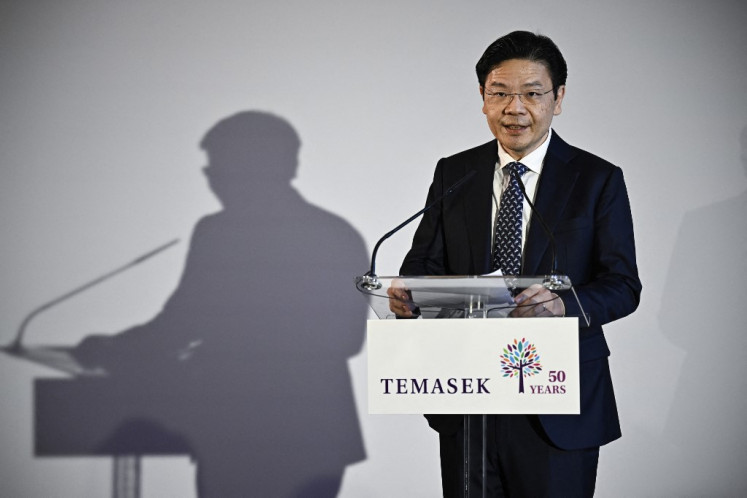Displaced villagers lose lawsuit in Japan
Nothing seems to have changed for thousands of displaced villagers in West Sumatra in their pursuit of justice that began decades ago under the autocratic rule of Soeharto
Change Size

N
othing seems to have changed for thousands of displaced villagers in West Sumatra in their pursuit of justice that began decades ago under the autocratic rule of Soeharto.
On Thursday, a Japanese court ruled against the villagers' demands for damages after being evicted from their homes without proper compensation to make way for a dam funded by the Japanese government.
The villagers, 8,396 of them in total, were seeking *5 million (US$54,250) per plaintiff (or *42 billion in total), in the first-ever lawsuit to involve Japanese foreign aid.
The Tokyo District Court argued that the villagers could not claim money from the Japanese government or its aid agencies.
"The case is an internal matter for the Indonesian government to deal with," presiding judge Yasushi Nakamura said as quoted by Bloomberg.
The villagers' grievances date back to March 1980, when a Japanese company, Tokyo Electric Power Service Co. (Tesco), carried out a feasibility study for the construction of a dam in the Koto Panjang area of West Sumatra, to be used to generate electricity.
A decade later, the Japan government agreed to finance the dam and power plant project with *30 billion, which was to be paid back by the Indonesian government over 30 years at an interest rate of 2.5 percent.
The low rate, however, came with conditions including the appointment of Japanese companies to carry out construction, a practice now largely abandoned by the government because of its unsustainable nature.
In April 1990, a Japanese daily newspaper, Nihon Keizai Shinbun, published an article on environmental destruction tied to the Koto Panjang project. In August of that year, Sumi Kazuo, a professor at Yokohama City University, and Damoto Akiko, then member of the Japanese upper house, visited Koto Panjang and recommended the project be stopped based on social and environmental concerns.
But the project continued, regardless, with a ground-breaking ceremony in September 1991. By this time a total of 16,954 people or 4,886 households living in 10 villages had already been forced to leave the site. The relocation also included 31 elephants, 25 of which later died after failing to adapt to their new environment.
Other elements of the local environment, including rare animals and insects, were left to perish in the dam, which drowned not only an entire forest but also part of national heritage, an 11th century Hindu temple called Candi Muaratakus.
The villagers have made many attempts to get justice, after the government failed to live up to its promise to provide housing and sources of livelihood. Two lawsuits have been filed against the government, the first in June 1998 and the second in May 2000, but no comprehensive resolutions have been made so far.
In September 2002, with the help of a local NGO, the Indonesian Forum for the Environment (Walhi), as well as Japanese activists and scholars, the villagers filed a lawsuit to the Tokyo court against the Japanese government, the Japan Bank for International Cooperation (JBIC) and Tesco.
Responding to the court's decision, Syahrial Loetan, secretary to the state minister for state development planning, said there were a small group of families who had not received proper compensation from the government.









